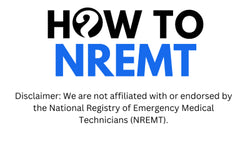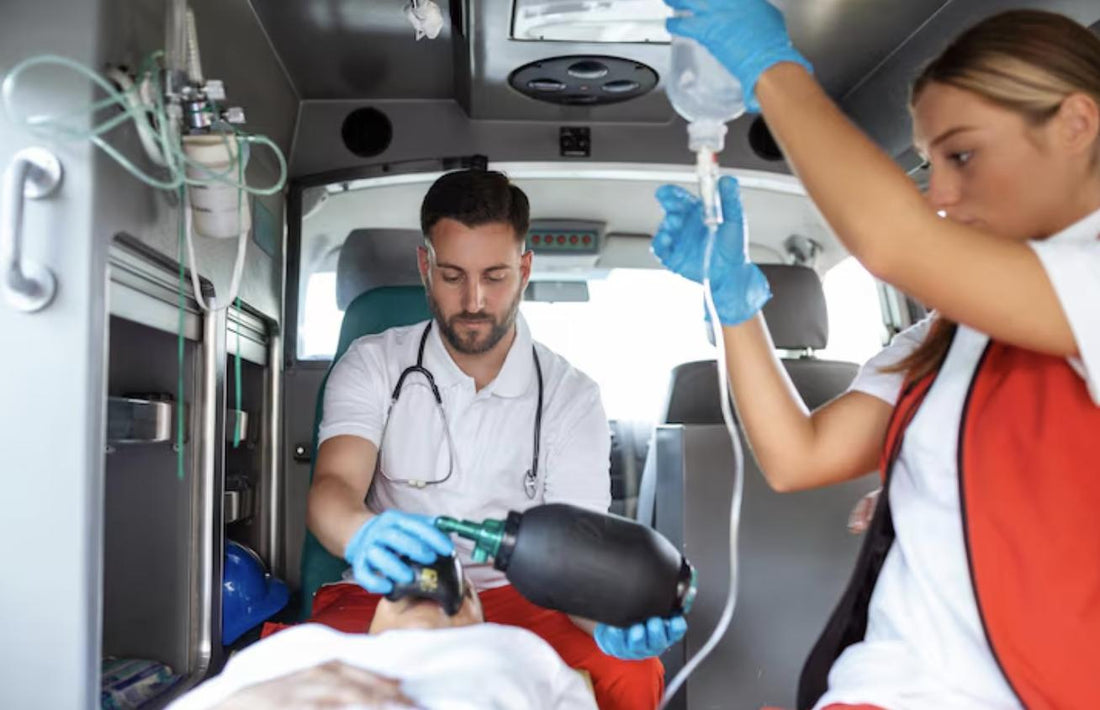Every EMT student knows the alphabet soup of acronyms. From ABCs to SAMPLE to DCAP-BTLS, these memory tricks are drilled into every class and flashcard deck. But here’s the problem: the NREMT exam has changed, and many candidates are still relying on outdated mnemonics that no longer line up with how the test is built.
The National Registry of Emergency Medical Technicians (NREMT) BLS certification exam got a major update on April 7, 2025. Instead of simply testing rote recall of airway techniques and textbook sequences, the new exam is structured around real-world patient care. This shift means that you need to focus on the acronyms that actually help you think and prioritize like an EMT, not just the ones you memorized in class.
This article breaks down the acronyms worth using for the 2025 NREMT exam, explains how they fit into the new content domains, and shows how to apply them as mental checklists during test questions.
1. PENMAN
·Personal protective equipment
·Environmental hazards
·Number of patients
·Mechanism of injury / nature of illness
·Additional resources needed
·Need for spinal precautions
PENMAN helps you slow down and make sure the scene is safe before jumping in. Many test questions are designed to trick you by including hazards in the question stem. If you miss those hazards and start patient care too soon, you will get the question wrong even if your later clinical steps are correct.
Example: You arrive at a car crash. Before touching anyone, you put on gloves (PPE), note a downed power line (environmental hazard), see three total patients, recognize blunt trauma from a side impact, call for two extra ambulances, and decide to hold manual c-spine on the most injured patient. This entire thought process happens in seconds and prevents missing dangers that can cost you the question.
2. ABCDE

·Airway
·Breathing
·Circulation
·Disability (neurological status)
·Exposure (look for hidden injuries)
ABCDE keeps your assessment systematic. It also reminds you to treat problems as you find them rather than completing the whole assessment before intervening.
Example: A man is found collapsed on the sidewalk. You confirm he has an open airway, assess his breathing rate, check for a pulse and bleeding, do a quick mental status check, and remove his jacket to look for hidden trauma. You fix each problem as you find it, which is exactly how NREMT wants you to approach critical patients.
3. AVPU
·Alert
·Verbal
·Pain
·Unresponsive
AVPU gives you a quick snapshot of the patient’s mental status during the Primary Assessment.
Example: A patient opens their eyes when you speak. That is “V” for verbal. This gives you a fast mental status rating and helps determine their priority level.
4. SAMPLE
·Signs and symptoms
·Allergies
·Medications
·Past medical history
·Last oral intake
·Events leading to the incident
Example: A woman with chest pain reports shortness of breath (signs/symptoms), a penicillin allergy, takes blood pressure meds, had a heart attack 3 years ago, last ate breakfast, and started feeling pain after shoveling snow. This full history points you toward a possible cardiac cause and prepares you to give the hospital a clear report.
5. OPQRST
·Onset
·Provocation
·Quality
·Region/radiation
·Severity
·Time
SAMPLE ensures you gather key history points. OPQRST helps you assess pain or other subjective complaints in more detail.
Example: You ask the same woman when the pain started (onset), if anything makes it worse (provocation), what it feels like (quality), where it is and if it moves (region/radiation), how bad it is on a 1–10 scale (severity), and how long it has lasted (time). Together with SAMPLE, this builds a clear symptom profile.
6. TICLS
·Tone
·Interactiveness
·Consolability
·Look/gaze
·Speech/cry
TICLS helps you evaluate whether a pediatric patient appears sick or well. Subtle changes in behavior can indicate serious illness in children.
Example: A toddler is limp, not making eye contact, and cannot be consoled by their parent. This scores poorly on TICLS and tells you they are sick until proven otherwise. Pediatric questions on the exam often test whether you can recognize subtle danger signs like this.
7. START (for Mass-Casualty Triage)
·Simple
·Triage
·And
·Rapid
·Treatment
START allows you to quickly categorize multiple patients at a mass-casualty incident (MCI).
Example: At a bus crash, you walk through the scene. One patient walks away when told to move (green), another is not breathing until you open the airway then starts breathing (red), and another is breathing 40 times a minute with weak pulses (red). START triage gives you a structured system to assign these tags quickly under pressure.
8. DCAP-BTLS

·Deformities
·Contusions
·Abrasions
·Punctures
·Burns
·Tenderness
·Lacerations
·Swelling
Used for trauma physical exams to make sure you don’t miss injuries.
Example: During a head-to-toe trauma check, you systematically feel each body part for these injury types. This prevents missing small wounds that could become life-threatening later, which is exactly what exam questions are designed to catch.
9. TPR
·Temperature
·Pulse
·Respirations
A quick vital sign summary.
Example: A patient with fever, rapid pulse, and fast breathing could be septic. The exam often gives vital signs out of order, so grouping them as TPR helps you catch abnormal patterns quickly.
10. APGAR
·Appearance
·Pulse
·Grimace
·Activity
·Respiration
Used to evaluate newborns at 1 and 5 minutes after birth.
Example: A newborn who is pink, has a pulse of 140, cries when stimulated, flexes arms, and breathes strongly gets a score of 9. This shows they are healthy and need only routine care.
Final Thoughts
Acronyms are only useful if they match how the exam expects you to think. The 2025 NREMT exam is designed to measure real-world reasoning, not flashcard recall. If you focus on the acronyms above, you will be using the same structure that the exam questions are built around.
Every time you practice a scenario or answer a question, ask yourself which domain you are in and which acronym can help you stay organized. This approach will help you think like an EMT in the field, which is exactly what the exam wants to see.
At How To NREMT, we build all of our NREMT exam prep material around the content domains that the exam actually tests. We do not waste your time with irrelevant trivia or outdated content. We guide you through realistic scenarios that show how and when to use the acronyms that matter so you can move through questions with confidence.
Explore our full-access membership and private coaching to get started.

